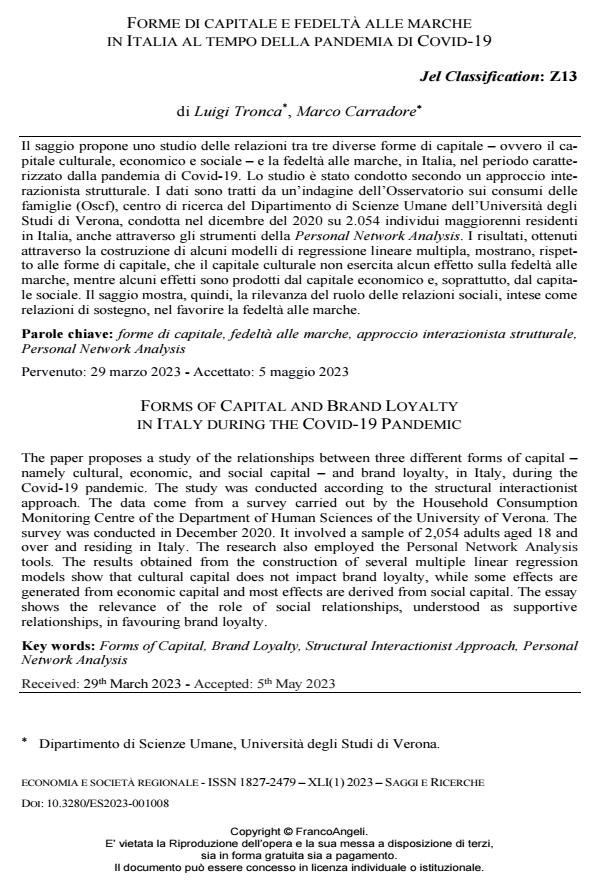Forms of capital and brand loyalty in Italy during the covid-19 pandemic
Journal title ECONOMIA E SOCIETÀ REGIONALE
Author/s Luigi Tronca, Marco Carradore
Publishing Year 2023 Issue 2023/1
Language Italian Pages 19 P. 97-115 File size 367 KB
DOI 10.3280/ES2023-001008
DOI is like a bar code for intellectual property: to have more infomation
click here
Below, you can see the article first page
If you want to buy this article in PDF format, you can do it, following the instructions to buy download credits

FrancoAngeli is member of Publishers International Linking Association, Inc (PILA), a not-for-profit association which run the CrossRef service enabling links to and from online scholarly content.
The paper proposes a study of the relationships between three different forms of capital - namely cultural, economic, and social capital - and brand loyalty, in Italy, during the Covid-19 pandemic. The study was conducted according to the structural interactionist approach. The data come from a survey carried out by the Household Consumption Monitoring Centre of the Department of Human Sciences of the University of Verona. The survey was conducted in December 2020. It involved a sample of 2,054 adults aged 18 and over and residing in Italy. The research also employed the Personal Network Analysis tools. The results obtained from the construction of several multiple linear regression models show that cultural capital does not impact brand loyalty, while some effects are generated from economic capital and most effects are derived from social capital. The essay shows the relevance of the role of social relationships, understood as supportive relationships, in favouring brand loyalty.
Keywords: Forms of Capital, Brand Loyalty, Structural Interactionist Approach, Personal Network Analysis
Jel codes: Z13
Luigi Tronca, Marco Carradore, Forme di capitale e fedeltà alle marche in Italia al tempo della pandemia di Covid-19 in "ECONOMIA E SOCIETÀ REGIONALE " 1/2023, pp 97-115, DOI: 10.3280/ES2023-001008